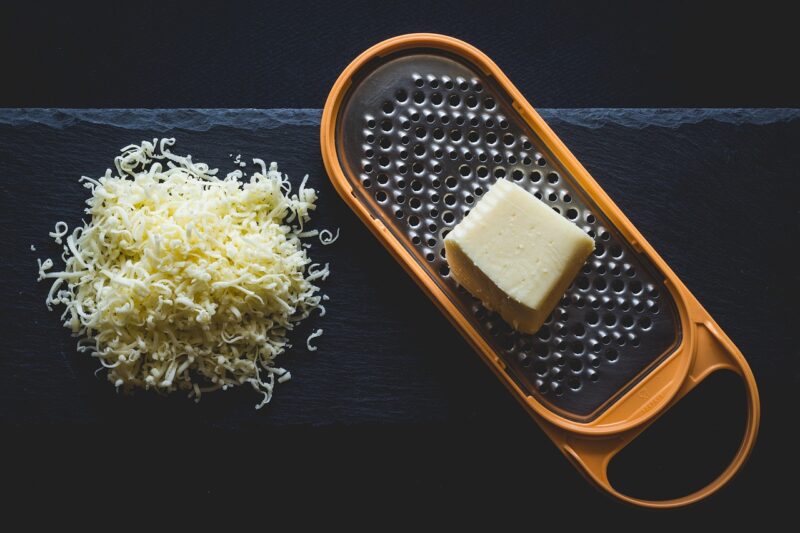When it comes to cheese, shredded varieties hold a special place in the hearts of many cooks and cheese lovers alike. Whether you sprinkle it over a hot casserole, layer it in a delicious burrito, or mix it into a fresh salad, shredded cheese adds a level of flavor and texture that is simply unmatched.
But what happens when you find yourself with more shredded cheese than you can use? Can you freeze it? This article will explore the ins and outs of freezing shredded cheese, offering practical tips, benefits, potential pitfalls, and creative ways to use your frozen cheese.
How to Freeze Shredded Cheese: A Step-by-Step Guide
Now that we’ve established the basics, let’s jump into the practicalities of freezing shredded cheese. Follow these steps to ensure that your cheese can be enjoyed even when it’s out of season.
Step 1: Preparation
Choose Fresh Cheese: Start with freshly shredded cheese. Avoid products that are close to their expiration date, as this can affect the quality after freezing.
Portion It Out: Divide your cheese into portions that you’ll likely use at one time. This makes thawing more manageable and reduces waste.
Step 2: Packaging
Use Airtight Containers: Place the cheese into resealable plastic freezer bags or airtight containers. If using bags, try to remove as much air as possible to prevent freezer burn.
Label with Date: Note the type of cheese and the date it was frozen on the packaging. This helps keep track of freshness and ensures you use it within a reasonable time frame.
Step 3: Freezing
Lay Flat to Freeze: If using bags, lay them flat in the freezer. This not only saves space but also speeds up the freezing process, which can help maintain better texture.
Freeze Quickly: For best results, freeze the cheese as quickly as possible. A rapid freeze helps maintain the cheese’s integrity.
Step 4: Thawing
Thaw in the Refrigerator: When you’re ready to use the cheese, transfer it to the refrigerator and let it thaw gradually. This allows moisture to redistribute evenly.
Use Promptly: Once thawed, try to use the cheese within a week. This ensures optimal taste and quality.
Benefits of Freezing Shredded Cheese
Freezing shredded cheese comes with several advantages, whether you’re a meal-prepping enthusiast or just trying to reduce food waste.
Save Money
Cheese can be a significant expense, especially when bought in bulk. By freezing leftovers, you can take advantage of sales and use the cheese when needed, saving your wallet in the long run.
Extend Shelf Life
Fresh cheese typically has a limited shelf life, but freezing can extend its usability for up to six months. Even with some texture changes, frozen cheese can still add flavor to many dishes.
Convenience for Cooking
Having a stash of frozen shredded cheese means you’ll always have the main ingredient for your indulgent mac and cheese or cheesy pizza night right on hand. It reduces the need for last-minute grocery runs, simplifying meal planning.
Potential Drawbacks of Freezing Shredded Cheese
While there are plenty of reasons to freeze shredded cheese, it’s essential to acknowledge some potential drawbacks.
Texture Changes
One of the most significant changes that occur during freezing is the alteration in texture. Freezing can lead to a grainy or crumbly consistency post-thawing, which may not be ideal for all recipes. While this is often acceptable in cooked dishes, it may be less appealing for salads or cold appetizers.
Flavor Alterations
Some cheeses may lose a touch of their flavor after freezing. Although the cheese remains safe to eat, the savory nuances might become dulled, a factor to keep in mind for certain gourmet dishes.
Creative Ways to Use Frozen Shredded Cheese
To ensure that your frozen shredded cheese doesn’t go to waste, consider the following creative uses:
1. Cheesy Sauces
One of the best ways to utilize thawed shredded cheese is in cheesy sauces. By melting it down with milk or cream, you can whip up a hearty cheese sauce for pasta or vegetables.
2. Casseroles
Thawed cheese adds delightful flavor and texture to casseroles. Whether you’re layering it between pasta or mixing it into a hearty vegetable bake, it performs beautifully when baked.
3. Soups and Stews
Stirring shredded cheese into soups can enhance their creaminess. Whether you’re making a cheesy broccoli soup or a classic chili, a handful of thawed cheese can elevate your dish significantly.
4. Pizza Topping
Frozen shredded cheese is perfect for pizza night. Simply sprinkle it on your dough before baking, and enjoy that gooey, melt-in-your-mouth goodness.
5. Breakfast Dishes
Think frittatas, omelets, or breakfast burritos. Adding cheese not only enriches the flavor but also contributes to a satisfying texture.
How to Identify Freezer Burn and Other Quality Concerns
Over time, even well-stored shredded cheese can fall victim to freezer burn, which occurs when air reaches the food and dehydrates it. Signs to watch for include:
Visual Changes
Look for dry patches or discoloration. While it’s safe to consume, freezer-burned cheese may not be satisfying in taste.
Texture Issues
If the cheese feels very crumbly or grainy after thawing, it’s likely affected by freezing. This won’t impact its safety but may alter your cooking plans.
Storage Duration: How Long Can You Keep Frozen Shredded Cheese?
The shelf life of frozen shredded cheese depends on several factors, including the type of cheese and how well it was stored.
Hard Cheeses: These generally last longer. Aged cheddar or Gruyere can remain in optimal condition for six months to a year if stored correctly.
Semi-Hard Cheese: Varieties like mozzarella and Monterey Jack are best used within three to six months for the best flavor and texture.
Soft Cheeses: Generally not recommended for freezing, but if handled correctly, they might last a month.
Understanding Shredded Cheese: What Makes It Unique?
Before we tackle the freezing process, it’s essential to understand what shredded cheese is and the factors that influence its texture, flavor, and shelf life. Shredded cheese is usually a convenient form of cheese that is cut into fine strips. It can come from various cheese types, including cheddar, mozzarella, Monterey Jack, and more.
Typically, when cheese is shredded, it’s mixed with anti-caking agents to prevent clumping. While this can aid in storage and use, these additives may impact the freezing process and the final product’s quality.
The Role of Anti-Caking Agents
Shredded cheese often contains ingredients like potato starch or cellulose. These ingredients can create a barrier during freezing, making the cheese more prone to freezer burn and affecting its texture post-thawing.
Types of Cheese Most Suitable for Freezing
Most commonly shredded varieties, like cheddar and mozzarella, freeze well. However, softer cheeses or those with a high moisture content, such as ricotta or cottage cheese, may not yield satisfying results when frozen.
Alternatives to Freezing Shredded Cheese
If the idea of freezing shredded cheese doesn’t seem appealing, there are alternatives to consider that may suit your culinary desires just as well.
Purchase Smaller Quantities
If you find yourself frequently overflowing with leftovers, consider buying smaller amounts of cheese. Artisan cheese shops often sell by weight, allowing for more control over your purchases.
Make Cheese-Based Dishes
Another great way to use excess cheese is to create cheese-heavy meals or snacks. Items like quesadillas, grilled cheese sandwiches, or savory cheesecakes can provide delicious outlets for your shredded cheese, keeping waste to a minimum.
Experiment with New Recipes
Instead of focusing solely on freezing, explore new recipes that highlight cheese. Dishes like four-cheese pasta or cheesy stuffed peppers can add variety to your menu while utilizing the cheese you’ve got.
Final Thoughts: To Freeze or Not to Freeze?
With comprehensive insights into freezing shredded cheese, it’s clear that while freezing can be a wonderful solution for preserving quality and reducing waste, careful handling is essential.
Understanding the impact on texture and flavor will guide your choices, ensuring that the enriched taste of your meals remains intact. Whether you opt to freeze your leftover cheese or find new ways to enjoy it before it spoils, the ultimate goal is to embrace the versatility and joy that cheese adds to our culinary adventures.








